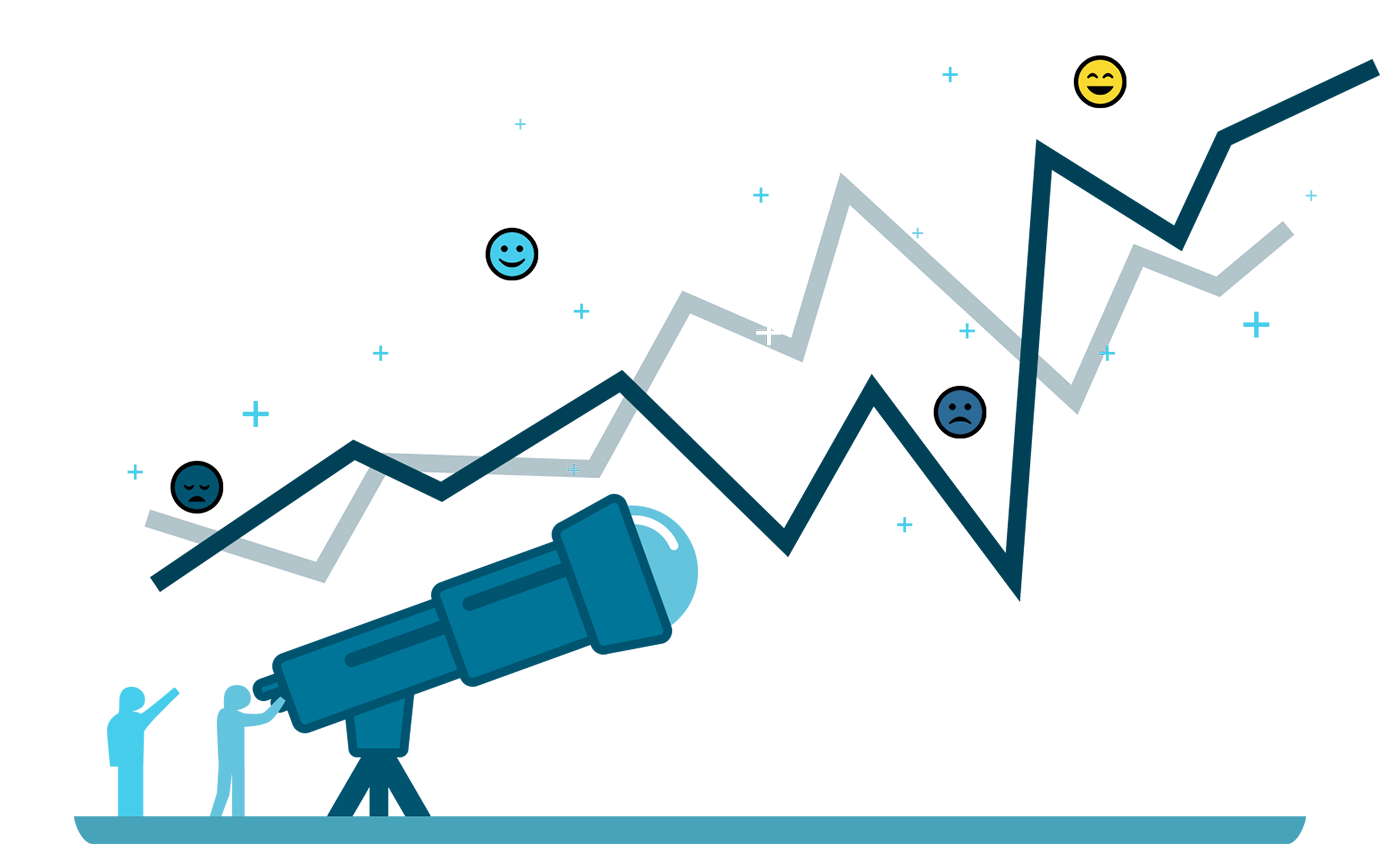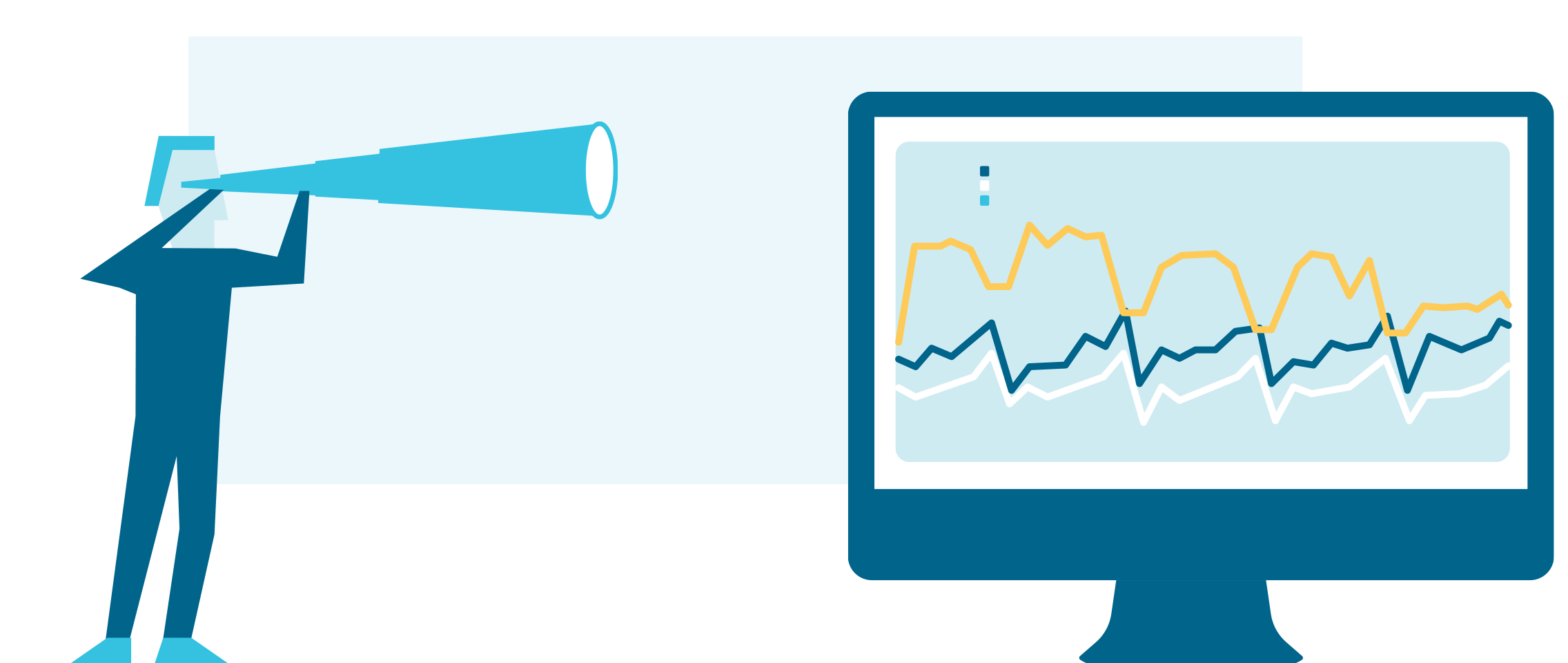
Planning organizational objectives for the future? You need a forecasting process. Setting targets and predicting the success of upcoming campaigns is not easy. While you mostly rely on numbers, they alone cannot give you a holistic view of your company’s current or potential performance. You have to go way beyond just numbers or quantitative forecasting if you want to make effective decisions for your company.
Qualitative forecasting can help executives make predictions about company finances, based on expert judgments. It is performed by analyzing past and future operations. This allows executives to predict how the company may perform in the future. The information they look at is collected from sources like staff polls or market research. Accounting for both sides of the forecasting process can help you set accurate targets and put plans in motion. Through qualitative forecasting, you can understand customer and market behavior in a deeper way, which is particularly helpful if your company is exploring new sales methods. As your company grows, qualitative forecasting will help you make sound decisions and reliably predict what your sales might be.
Why Do You Need Qualitative Forecasting?

Need to decide how many new hires to make, or how much inventory to keep? Or how to adjust sales operations to be more efficient? Or maybe you’re curious about which feature of your company’s product or service works best in advertisements. Qualitative forecasting can help you find out that, and more. You can rely on sources apart from numerical data, and predict trends accurately. Here’s why you need it.
It’s the Other Side of the ‘Forecasting Coin’
In conjunction with quantitative forecasting, qualitative forecasting can give you a holistic perspective of both subjective and objective factors, before you make a business decision. This is very useful for bigger companies with reams of numerical data that can supplement it with market research and expertise. This helps the business put out comprehensive, accurate sales predictions.
Uses History to Help With the Future
There’s a saying that those who don’t learn from history are doomed to repeat it. Qualitative forecasting prevents just that by forcing business owners to take into account their firm’s past performance, and not dismissing any anomalies as a one-time thing. Qualitative forecasting allows you to use objective, quantifiable historical data to create sales projections, expense predictions, and revenue forecasts based on your firm’s history. This is a great way to prepare for worst-case scenarios if one ever occurs.
Good for Small Businesses and Startups
As mentioned earlier, bigger companies with huge bundles of data could benefit from qualitative forecasting; even smaller businesses that don’t have many numerical data could make use of qualitative forecasting to help them achieve their business goals and objectives. In the face of a lack of volume of data, other factors might help these firms make decisions.
Great for Attracting Stakeholders
Let’s face it. Hard numbers based on data will always make your pitches more attractive, whether you’re trying to find a loan, attract investors, secure a new line of credit, expand with a partner, or even sell your firm. Investors usually feel more secure when they see solid numbers that point toward a logical forecast. They may not be lured by vague ambiguous statements like “our past experience sells us.” They want you to back that statement up with data.
Recognize Patterns and Make Better Decisions
Computer programs have made it possible for us to whittle down to the most useful data to make accurate projections. For example, even a seemingly simple Excel sheet can help you find useful patterns like changes in sales over a year or more. You can segregate data by date, customer, vendor, or whatever parameters you want. You could predict production costs based on a pattern found over the last 5 years, or more. This can help you make sound business decisions.
How to perform Qualitative Forecasting

There are several methods of doing this. They include –
The Delphi Method
In this method, a panel of experts is individually questioned, soliciting their opinion one at a time. This is done to avoid any bias so business predictions aren’t affected by personal opinions. Other employees then study these responses, replying back with their own analyses and queries. The teams then settle on a prediction that is practical for the firm and move forward from there. This method is great because it involves questioning multiple people about sales forecasts separately, cleverly avoiding group thinking or off-hand and collaborative opinions. However, this method leads to a lack of consensus because many experts can offer widely different perspectives, making it tough to put together a sensible qualitative forecast.
Survey
The survey is the old tried and tested, and the highly accessible option of performing effective qualitative forecasting. You get your data from your consumers, and that firsthand insight can help you penetrate new markets or study your target audience’s behavior. There are so many ways of creating and distributing surveys, and most of these collect data about ‘experience.’ Emails, cold calls, or inviting clients to the office for personal interviews can help firms collect information, which they can use to make useful predictions about a company’s future, based on data from their existing customers.
Market Research
Using market research, you can evaluate the success of your company’s products or services by introducing them to consumers and recording the reactions. Companies can either use their own employees or outside agencies and conduct market research in focus groups or blind product testing. Companies can study consumer reactions to decide what products or services to push forward and which ones to revise to better meet consumers’ needs. Market research is a great insight into what potential new consumers want from your organization.
Outsource it to a Consultancy
Sometimes, the best thing to do is to leave qualitative forecasting to the experts, especially if you’re a start-up or a small business, with limited experience and without the means to put together reliable qualitative forecasts. Many companies outsource their qualitative forecasting responsibilities to consultancies that have a better insight into the industry, or markets.
Like all forecasting techniques, qualitative forecasting too has a few drawbacks.
Some of them are –
- Bias clouds subjective information, and qualitative data is inherently subjective.
- Humans are error-prone, and without concrete numbers, qualitative forecasting could produce inaccurate results.
- A consultancy might not really know the company well enough to perform a detailed or accurate enough analysis.
In conclusion, qualitative forecasting is indispensable for an organization. If you want your firm to move toward its goals, you need a proper forecast to set those goals, and break them down into milestones, etc. While analyzing numbers can help your firm to a certain extent, qualitative forecasting provides that three-dimensional insight that brings to the table varied experiences, and a tinge of the real world into strategy and decision-making so companies can prepare for any scenario.
Final Thoughts
Qualitative forecasting is used to help companies make sales and marketing decisions. Health care employees use it to find trends in public health, colleges rely on it to predict student trends. It finds use in construction, agriculture, and virtually every other industry with managers relying on it to reach business goals. Read our blog on how you can leverage social media to amplify your business, use the internet to your advantage, to make more sales.
